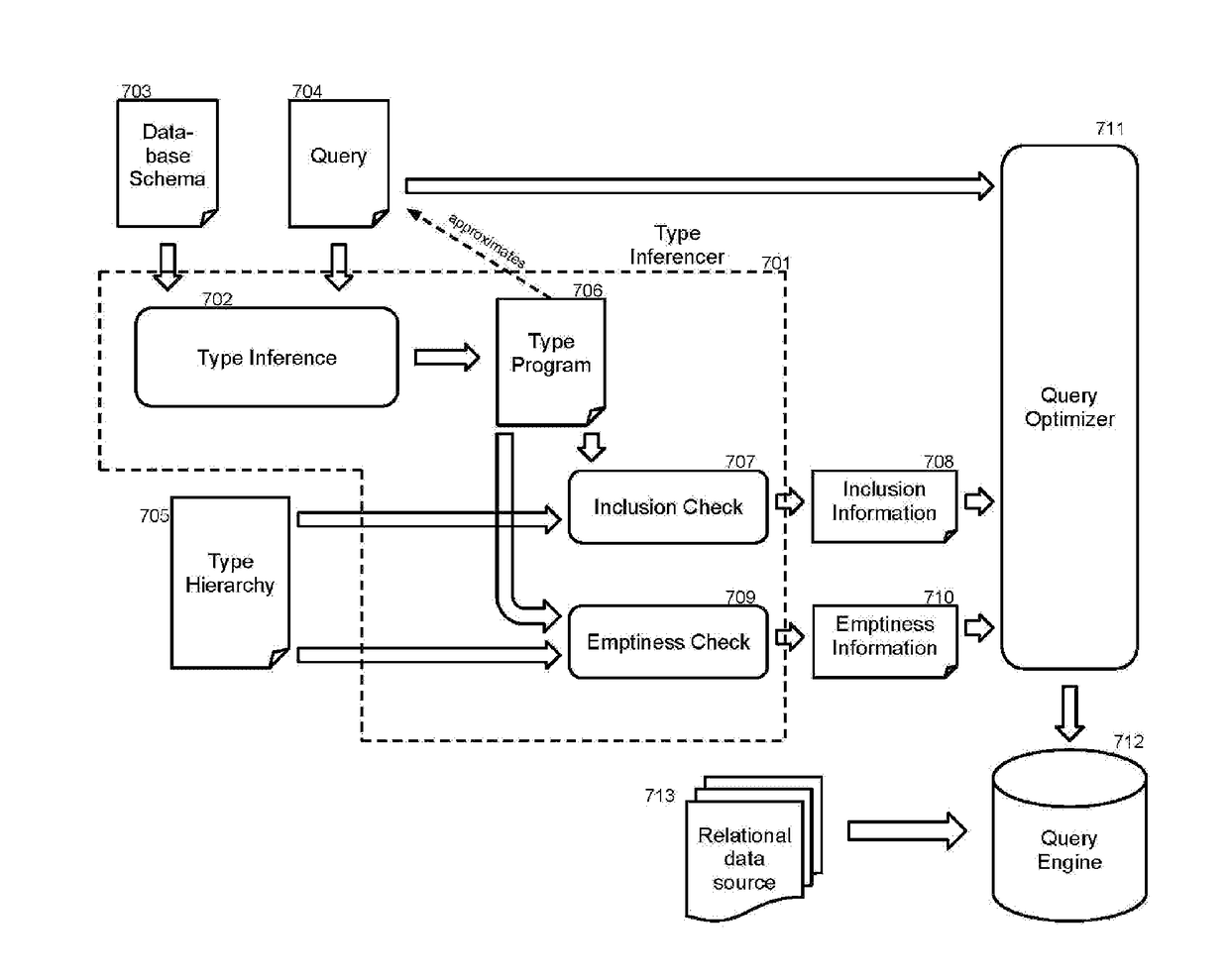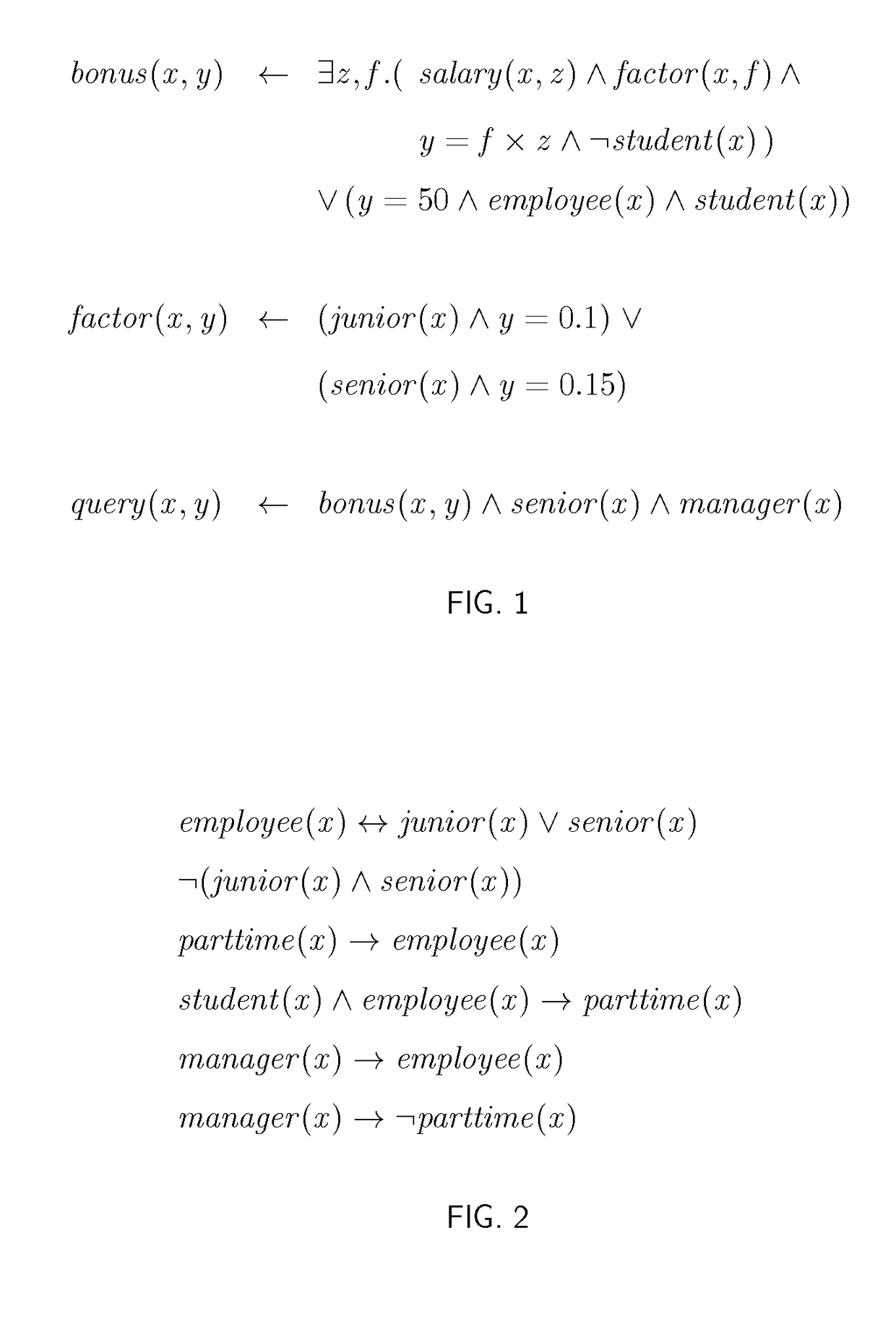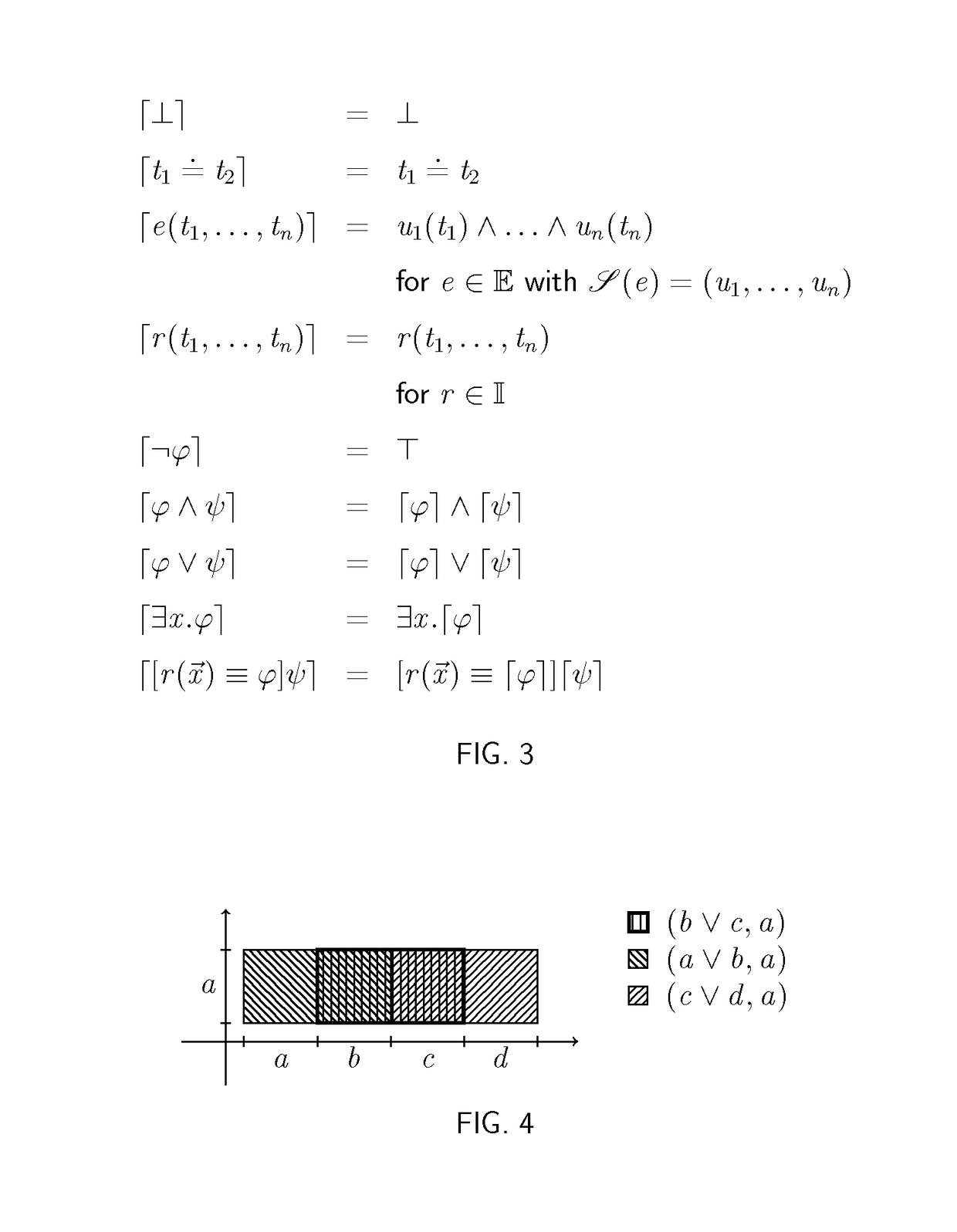Type inference for datalog with complex type hierarchies
a type hierarchy and datalog technology, applied in the field of information retrieval, can solve problems such as errors, operation not making sense, and inability to predict accurately (without running the query)
- Summary
- Abstract
- Description
- Claims
- Application Information
AI Technical Summary
Benefits of technology
Problems solved by technology
Method used
Image
Examples
Embodiment Construction
[0022]It should be understood that these embodiments are only examples of the many advantageous uses of the innovative teachings herein. In general, statements made in the specification of the present application do not necessarily limit any of the various claimed inventions. Moreover, some statements may apply to some inventive features but not to others. In general, unless otherwise indicated, singular elements may be in the plural and vice versa with no loss of generality.
[0023]1. Introduction
[0024]The present invention infers precise types for queries where the entities in the database satisfy complex conditions regarding subtyping, disjointness and so on.
[0025]To illustrate, consider the Datalog program in FIG. 1, which is a slight adaptation of an example in [1]. It assumes a database that contains monadic extensional relations for employee, senior, junior, parttime, student and manager. These monadic relations capture the entities that are manipulated by queries, and they are...
PUM
 Login to View More
Login to View More Abstract
Description
Claims
Application Information
 Login to View More
Login to View More - R&D
- Intellectual Property
- Life Sciences
- Materials
- Tech Scout
- Unparalleled Data Quality
- Higher Quality Content
- 60% Fewer Hallucinations
Browse by: Latest US Patents, China's latest patents, Technical Efficacy Thesaurus, Application Domain, Technology Topic, Popular Technical Reports.
© 2025 PatSnap. All rights reserved.Legal|Privacy policy|Modern Slavery Act Transparency Statement|Sitemap|About US| Contact US: help@patsnap.com



